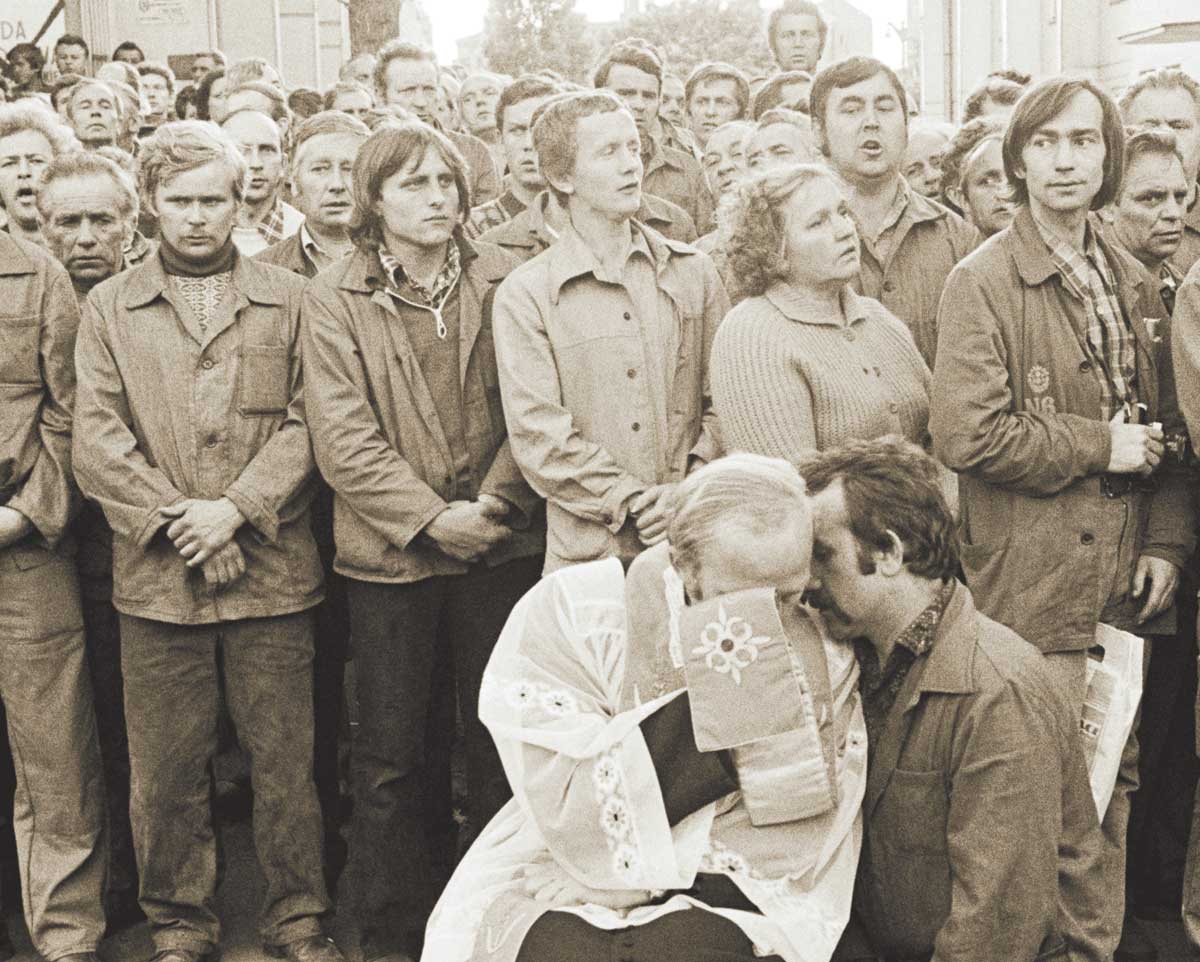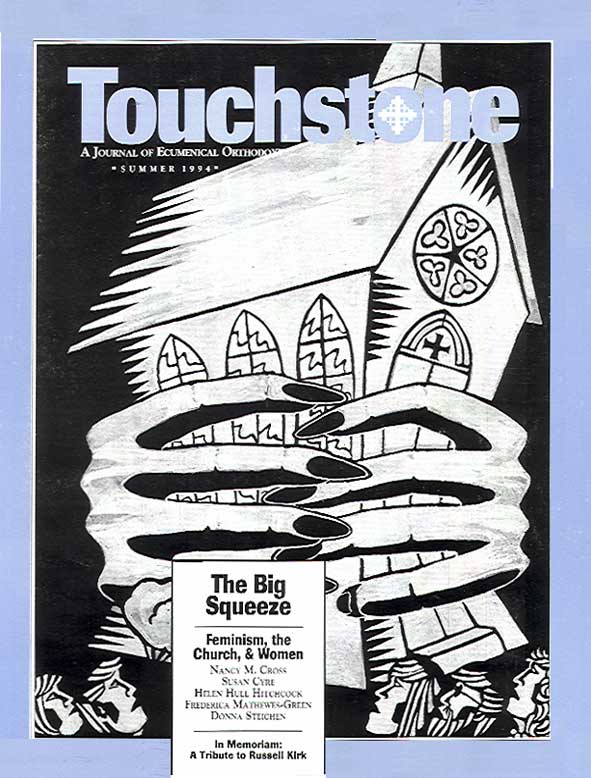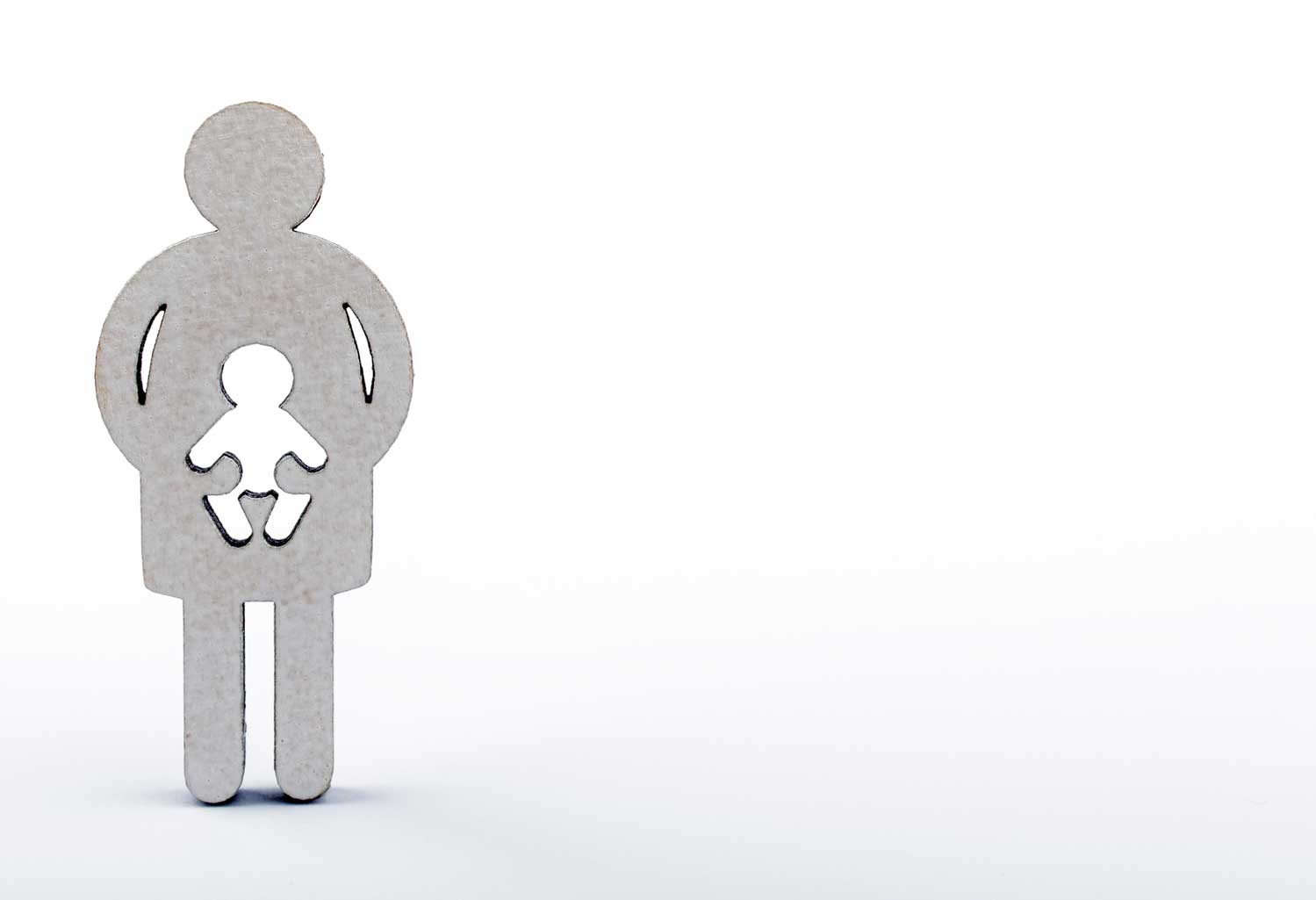Twice Liberated
A Personal Journey Through Feminism
by Frederica Mathewes-Green
When I joined the college newspaper as a shy freshman many years ago, the editor gave me my first assignment: “Find out what’s all this stuff about women’s lib.” I was baffled as to how to do that; reports of feminism (which was then uniformly called “women’s lib”) were just beginning to titillate the public, just beginning to show up in Johnny Carson jokes about “bra-burners.” Was it possible to dig up any local “libbers”? My editor had a suggestion: go to the Student Union and have them announce over the loudspeaker, “Anyone representing the women’s liberation movement, please come to the information desk.”
It is intriguing to picture what would happen if such a message were announced from that same desk today. But in September 1970, there was a slight pause before two women came steaming up, glowing with the zealot’s inner flame. Kathy and Rosa steered me into the lounge, where they opened to me the hidden knowledge of women’s oppression through the ages. As they expounded this mystic wisdom, I began to nod. I liked what I was hearing.
I was ready to believe in something. I had spurned my Roman Catholic upbringing a few years before, and spent the high school years strumming anti-war songs at a hip Unitarian church (our elfin pastor was fond of repunctuating St. John: “God is. Love!”) It was deep, of course, but somehow it wasn’t enough, sharing superior smiles with the elbow-patch crowd and sneering at Nixon. We were pledged to reject any conviction more precise than that people are grand and everyone should be nicer to each other. I was seventeen, and I was looking for deeper convictions.
So when my first campus byline appeared a week later, it was over a story that cautiously endorsed the “libbers,” and I continued my catechesis under Kathy and Rosa. The prototype version of women’s lib that they initiated me into was still searching for a focus. The movement understood itself as firmly underground, and was self-consciously counter-cultural, even deliberately crude (a favorite slogan was “Next time bite it off!”) Wearing suits with little bow ties and carrying briefcases was the farthest thing from our minds. We ridiculed men who wore suits.
The movement was a spontaneous, uncoordinated explosion of energy and anger without a clear plan and, in our case, amply fertilized by the pungent manure of ignorance. Childless, we talked about using communal baby farms to free women from the awful burden of caring for their own children. Sexual neophytes, we talked earnestly about the Myth of the Vaginal Orgasm. Naive girls’ dorm dwellers, we sought out the town’s lesbian bar, where we were invited to dance by very serious older women with arms like sides of beef. In my own body I evidenced the confused zeal of the time: I stopped shaving my legs but continued plucking my eyebrows.
However, in a phase of the movement’s life when it was strongly associated with the term man-haters, we generally got along well with men. Most of us remained enthusiastically heterosexual. We were in harmony with our brothers in the overall hippie counter-cultural agenda, and our enemies were not men, but straights (meaning, in those days, non-dopers), Young Republicans, Jesus Freaks, and the Establishment.
In my senior year a movement buddy stopped me in a hallway. She was ecstatic with the news: a woman had won a top executive job at AT&T, wasn’t it great? No, I said, bewildered. What do we want executive jobs for? It’s just co-optation, getting sucked into the establishment. The women’s movement is not about trying to get a bigger piece of the pie. We’re talking about a different kind of pie altogether.
Someone scheduled a debate for an empty classroom; I represented the counterculture side. We’re selling out, I said. We didn’t start this revolution to end up with our representatives wearing suits and gold jewelry and looking important on TV. Remember Joni Mitchell singing, “You could have been more than a name on the door on the 33d floor in the air”? Remember Harry Chapin singing about the executive father too busy to see his son, and the son saying, “I’m gonna be like you, Dad”? Didn’t we reject all that careerism and materialism as deadening to the soul? Why in the world would we want it now?
I don’t recall if I won the debate; my position certainly did not win the war. Feminism now is, as Naomi Wolf cogently demonstrates in her new book Fire with Fire, split between Victim Feminism (self-defeating poutiness and man-blaming) and Power Feminism, which she champions. Wolf cites three principles for Power Feminism: Retaliation, Money and Worldly Power, and Victory. If nothing else, it is refreshing to hear the underlying values of this philosophy described so baldly.
My search for something deeper was not going to be satisfied by a women’s movement that lusted after earthly power; I was truly looking for a counterculture. If I could have listened to my heart more carefully, I would have identified some of those revolutionary values as love, joy, peace, patience, kindness, goodness and so forth. Throughout my college years I had surfed through Eastern religions, trying to find something that rang true, but the blue gods were never more than amusing.
A month after graduation our hitch-hikers’ tour of Europe brought me and my new husband to Dublin. The late afternoon light was glaring white as we stepped inside a dusty church and stood there blinking. I was attracted to a large marble statue in the back: Jesus pointing to his Sacred Heart, twined with thorns and springing into flames. I remembered the words from Sunday School: “Behold the heart that has so loved mankind.” A few minutes later I realized I was on my knees. When I stood up, I was a Christian.
In the following decades as a pastor’s wife—first in the Episcopal Church, more recently in Holy Orthodoxy—my relationship with feminism changed even as the movement itself changed. It took me several more years to question abortion, and longer than that to question knee-jerk inclusive language demands. I attended seminary and considered being ordained. Although my interior values were gradually becoming more conservative, I still clung to the external labels “feminist” and “liberal.” (My husband underwent a similar struggle; he took one of our sons along with him to pull the lever in the voting booth, so that he could maintain his claim of never having voted Republican.)
When I heard of a group called Feminists for Life I joined it immediately, and when they needed a newsletter editor a few years later I volunteered. At our first board meeting I received some surprising news: the editorship made me automatically a vice president. What’s more, the organization’s central, one-woman office was in Kansas City, and I was the only officer in the Washington, D.C. area. I was to start doing media!
A few months later I spoke on the abortion issue in public for the first time in my life. It was on a national viewer phone-in show on C-SPAN. More such shows followed, along with print and radio interviews and invitations to speak and write. In my video scrapbook of these TV shows I am wearing a suit and jewelry that, at least, looks like gold.
But as the years passed the “feminist” label began to rankle more and more. I could wear it by applying my own definition—a vague pronouncement from Gloria Steinem that suggested it meant only “the equality and full humanity of women and men.” Still, I was uncomfortably aware that the average person endowed the term with many more connotations. Most of my Feminist for Life buddies clung to the term, insistent that our use was legitimate particularly in light of the prolife convictions of the nineteenth-century feminist founders. But, as a writer, it worried me to use a word in ways outside the common understanding. The purpose of language is to communicate, and any living language grows according to its common use, not according to the dictates of partisan hijackers or an Academy. It seemed increasingly deceptive of me to have an esoteric definition of a word different from its commonly understood meaning.
Also, the very label seemed to divide, implying that issues pertaining to women could be separated from and were more important than other issues. My view of the human condition and the pervasiveness of sin had broadened, leading to a conviction that women could not ultimately win a bettered lot from any human agency, nor could women’s lot be improved without helping men and children as well. We are all together in this stewpot, and we all need the same Savior; there is only one true source for women’s Liberation. As the brilliant Episcopal Ad Project poster puts it, “You won’t find God’s gift to women in a singles’ bar.” Above the words Jesus’ gentle face appears, still luminous on a canvas centuries old.
Last fall a prominent Christian magazine asked me for an essay defending prolife feminism. I sighed, wishing I no longer had to expound on the feminist label, but for the sake of my organization’s advancement I complied. The editor phoned back: they liked it, but could I change the focus a bit and just write a defense of Christian feminism—why Christians should be feminist. The screws were tightening for me. I rewrote the piece. As soon as I’d faxed it, I phoned Feminists for Life’s national office and said I was ready to retire. I could no longer call myself a feminist. The journey that had begun that day in the student lounge, as Kathy and Rosa eagerly expounded the faith, had come to an end.
As I leave feminism, I take with me three convictions, three “women’s rights” for which I will continue to fight.
I. The Right to Be at Home in Our Bodies
This means the right to have our bodies left whole and healthy, unaltered for any goal of social engineering or impossible ideal of beauty. Included under this heading would be the right to reject the killing of our unborn children as a hideous and ghastly false offer of freedom; as Sidney Callahan says, we will never climb to equality over the dead bodies of our own children.
It also means rejecting chemical tampering with women’s hormones to fit her for sexual use without commitment. The lumps of Norplant rods, palpable under the skin of the upper arm, are as degrading as the metal tag in a cow’s ear. I pass over the unknown impact that the daily ingestion of artificial hormones may have on a woman’s hormonally-influenced emotions. My friend Juli Loesch Wiley asks, “Why should I put chemicals in my mouth that I wouldn’t put in my compost heap?”
The process of birth must be respected as well. Our bodies are designed to give birth, just as they are made to grow, breathe, digest food, and so forth. A medical philosophy that mistrusts this natural process and hops to intervene is as insulting and dangerous here as it would be with any other of these processes. When the body is functioning as it is designed to do, medicine’s role is like that of a lifeguard who watches out for trouble but does not routinely jump in the water and pump swimmers’ arms for them.
Being at home in our bodies means accepting our natural body shapes, colors, and textures, rejecting pathetic attempts to alter them to fit an impossible ideal. Cosmetic breast, belly, and facelift surgery is sad. I frequently travel, speaking at conferences and attending meetings, and everywhere I see Christian women self-subjected to illogical worldly appearance standards. Is it my old feminist roots that makes me want to give them this advice?: Do not spend large amounts of money fighting wrinkles, or large amounts of time fighting your hair. Even if you just keep your hair clean and brushed and otherwise let it do what it wants to do, you will still be allowed to vote and own property. If there is a big difference between how you look before and after you put on makeup, you’re wearing too much makeup. Your goal is to like your face just as it is right out of the shower. Makeup is for brightening and accents. The best way to make your eyes more beautiful is to spend more time in prayer.
Do not spend time strangling in pantyhose, teetering on heels, or otherwise distorting and discomforting your body without asking yourself, “Is there an easier way of dressing that will be equally acceptable in this situation?”
Go ahead and buy larger clothes. Imagine a composite of all the women all over the world who share your age and childbearing history. Apparently that’s what God has in mind. It’s okay to be shaped like them.
Think about the distinction between beautiful and attractive. Attractive people are the ones you are drawn toward; they attract in the sense that magnets do. Many components go into attractiveness, but beauty is not necessarily one of them; some beautiful women are cold and bitter and make you want to flee. Beauty inevitably fades, but attractiveness can be forever; it’s what you want to develop. Cultivate the attributes that you find attractive, which as St. Peter tells us have to do with the “hidden person of the heart” (1 Peter 3:4). Remember that people look at your face the most, and a habitual smile is your best ornament, with more impact than any jewelry, makeup, hairstyle, clothing, weight-loss or exercise program.
II. The Right to Be Different From Men
Early feminism insisted that men and women were alike. Later a strain arose that insisted that they were different: women were perfect and men were scum. Neither position is particularly helpful.
It seems rather that men and women are alike in the overwhelming majority of categories (think of the number of body parts, internal and external, that the sexes have in common). The differences seem more noticeable because we are used to comparing ourselves with each other, not with kangaroos or lichen.
Some feminists would assume that where the genders differ they are in conflict. It seems more likely that gender differences are meant to fit together in a delightful complementarity (demonstrably true in the physical realm). Emotional, moral, and temperamental differences between men and women are designed by God so that men and women, coming together, balance each other and create a harmonious society.
For example, a useful theory that has emerged from the social sciences in recent years is the idea that men and women differ in their approach to moral questions (indeed, to most life situations). Women begin with the human context, asking who will be harmed and who helped, and how best to advance the home community. Men begin with principles of justice, and seek to correct the situation in a way that will draw closer to those principles. (We paint here with a very broad brush what will be more subtle and mixed in any individual man or woman.)
It is tempting to consider man the norm, the baseline, and woman a variation (when Newsweek did an article on gender differences, an editor suggested the title “Why Girls Are Different”). However, we are more interdependent than that, and the formation of a moral community must be won as a three-legged race in which both genders contribute. A society too thoroughly ruled by masculine, principled justice loses touch with mercy. A remote moral code is applied to the warm flesh of human relationships; the ideal good becomes a Procrustean bed on which hapless limbs are stretched or sawed to fit. This relentless exaltation of cold duty is personified by the obsessive Javert of Les Miserables; it ends at Nuremberg.
We are not as quick to recognize the excesses of the feminine tangent, though they surround us. When principles fall away in shreds and unleash a heart-driven ethic of situational response, we soon find that the unconverted human heart is a ruthless place, increasingly eager to rationalize, to kill in the name of compassion.
This is due to the paradox that what begins as suspending the rules so that everyone can be happy evolves (in the face of that impossibility) into disregarding the rules so that me and mine can be happy. That possessive is appropriate: the tigress draws the circle of protection ever smaller, until at last the woman alone regards herself as the beneficiary of all actions. Carol Gilligan in In a Different Voice delineated this process admiringly: a woman’s moral development begins with self-interest, then opens to include others’ concerns, then ultimately matures to include once more her own best interest. In practical decision making, the results of the last level of maturity look very similar to the first.
Thus, we begin to hear messages from the pro-abortion camp that carry a deeper chill: that indeed abortion kills a woman’s own baby, but why shouldn’t women make life-and-death decisions? As in the cases of Abraham or Agamemnon, doesn’t the very difficulty of sacrificing a child show how noble women can be? See this crazed woman who decapitated her children on her front lawn; doesn’t it make us realize how oppressive and unjust are the burdens of motherhood? This self-serving romanticization of horrifying acts is the inevitable culmination of feminine morality untempered by masculine justice. It ends with Emma Bovary, or Scarlett O’Hara; it ends with a prostitute standing before a judging king and saying to a desperate mother, “Neither you nor I shall have him. Cut him in two!” (1 Kings 3:26) Unrestricted abortion on demand is the logical consequence of a moral order that has been too long bereft of firm and principled masculine guidance. When men withdraw their authority, women end by killing their children.
III. The Right to Go to Hell
This final conviction follows naturally on the heels of the above. Victim feminism has insisted that women’s troubles are all someone else’s fault, that women are to be pitied and indulged. Their bad behavior is the result of being badly treated. Lorena Bobbit walked to freedom on these grounds. If her husband had mutilated her sexually with a kitchen knife, he would be hanging from an oak in Manassas today.
The pedestal is a prison. In attempting to treat women with a little more generosity, we demean them: we pretend that they are not as strong, not as competent as men and that, as a result, they deserve special rules. Adult women are slipped into a lower moral class, like that of minor children, and presumed non-culpable because of a fuzzy notion that they couldn’t really know what they were doing, or couldn’t help it. Such special treatment ultimately trivializes them.
Women need salvation, as much as men do. While women and men have some delightful differences, one item belonging to our shared humanity is that all have sinned and fallen short of the glory of God (Romans 3:23).
One seldom imagines the typical “lost sinner” having the face of an average woman. When a lovely woman sings “Amazing Grace,” we may have to squint a bit to recall that she is still “a wretch like me.” Nor are we used to imagining John the Baptist leveling his “brood of vipers” speech (Luke 3:7) at a group of women, or of visualizing female adherents of the Pharisee party condemned by Jesus as “whitewashed sepulchres” (Matthew 23:27).
Yet women are just as worthy, and as in need of, such chastisement as men. Just as women can share in nearly every physical affliction that affects men (God does not reserve only the dainty diseases for them), so also they are as susceptible to the gravest sin and spiritual afflictions. There may be certain patterns of sin that have more appeal for one gender than another, but for every sin the wages is death (Romans 6:23). Women bear the same responsibility men do, face the same temptations and, if they die outside the grace of Jesus Christ, go to the same hell.
How shall a Christian woman regard feminism? Like the weather, it may be more or less troublesome, and parts of it may be more or less acceptable, but it’s not going away. As we follow the Way of the one who really is “God’s gift to women,” let us continue to call our sisters to the health and light that only he can give.
Frederica Mathewes-Green is a columnist for Beliefnet.com and a contributor to the Christian Millennial History Project multi-volume series. Her books include At the Corner of East and Now (Putnam), The Illumined Heart (Paraclete Press), and The Open Door: Entering the Sanctuary of Icons and Prayer (Paraclete Press). She lives in Linthicum, Maryland, with her husband Fr. Gregory, pastor of Holy Cross Orthodox Church. They have three children and three grandchildren.
subscription options
Order
Print/Online Subscription

Get six issues (one year) of Touchstone PLUS full online access including pdf downloads for only $39.95. That's only $3.34 per month!
Order
Online Only
Subscription

Get a one-year full-access subscription to the Touchstone online archives for only $19.95. That's only $1.66 per month!
bulk subscriptions
Order Touchstone subscriptions in bulk and save $10 per sub! Each subscription includes 6 issues of Touchstone plus full online access to touchstonemag.com—including archives, videos, and pdf downloads of recent issues for only $29.95 each! Great for churches or study groups.
Transactions will be processed on a secure server.
more on feminism from the online archives
more from the online archives

19.10—December 2006
Workers of Another World United
A Personal Commemoration of Poland’s Solidarity 25 Years Later by John Harmon McElroy
calling all readers
Please Donate
"There are magazines worth reading but few worth saving . . . Touchstone is just such a magazine."
—Alice von Hildebrand
"Here we do not concede one square millimeter of territory to falsehood, folly, contemporary sentimentality, or fashion. We speak the truth, and let God be our judge. . . . Touchstone is the one committedly Christian conservative journal."
—Anthony Esolen, Touchstone senior editor











